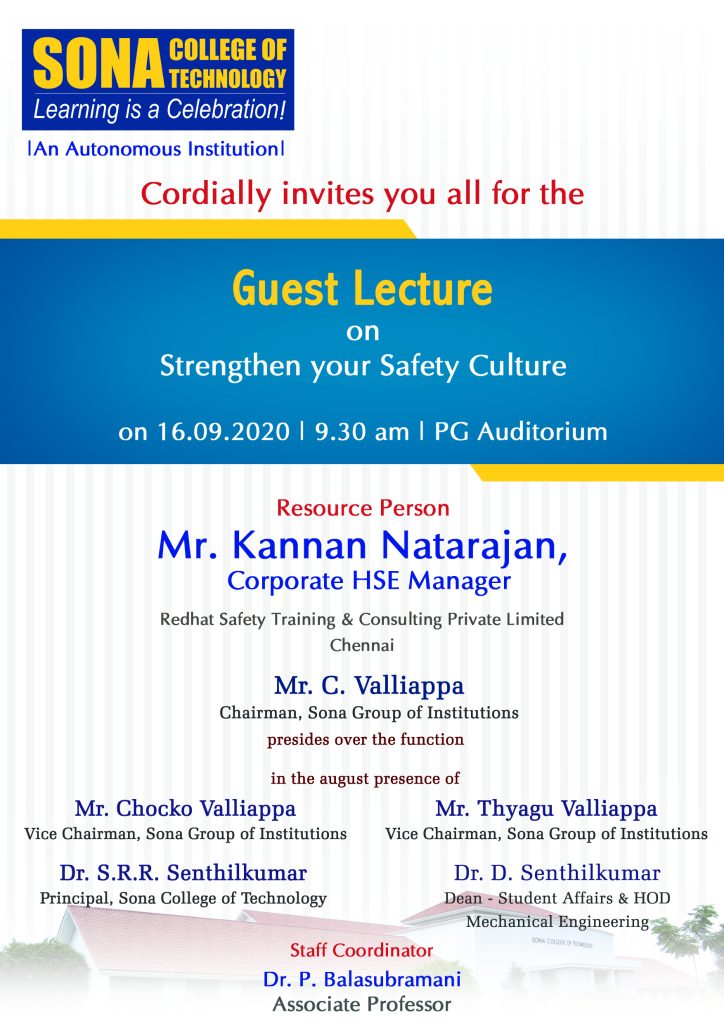Date/Time
Date(s) - 16/09/2020
All Day
Categories
Resource Person: Mr.Kannan Natarajan, Corporate HSE Manager,
Redhat Safety Training & Consulting Private Limited-Chennai.
Safety culture refers to the shared beliefs, values, and practices that shape an organization’s attitudes and behaviors towards safety. It encompasses everything from the physical environment to the behaviors of individual employees, and it is a critical component of any successful organization.
To strengthen your safety culture, there are several things you can do. Here are some tips:
Create a strong safety policy: Develop a comprehensive safety policy that outlines your organization’s commitment to safety. Make sure it includes guidelines on how to report accidents, near-misses, and hazards, as well as procedures for investigating incidents and implementing corrective actions.
Communicate regularly: Effective communication is essential for building a strong safety culture. Ensure that everyone in your organization is aware of your safety policy and understands their responsibilities. Regularly communicate safety-related information, including updates on incidents, changes to procedures, and reminders about safety best practices.
Lead by example: Leaders must set the tone for safety in their organization. Ensure that management is committed to safety and consistently models safe behaviors. Hold leaders accountable for their actions, and encourage them to actively promote safety throughout the organization.
Provide training: Training is crucial for ensuring that employees understand the risks associated with their work and how to mitigate them. Provide regular safety training, including hazard recognition, incident reporting, and emergency response procedures. Make sure the training is engaging and relevant to the employees’ job duties.
Recognize and reward safe behavior: Encourage employees to prioritize safety by recognizing and rewarding safe behavior. Celebrate safety milestones, recognize employees who report hazards or incidents, and provide incentives for participation in safety programs.
Continuously improve: Safety culture is not static; it requires ongoing effort to maintain and improve. Continuously evaluate your safety program and identify areas for improvement. Solicit feedback from employees and incorporate their suggestions into your safety program.
By following these tips, you can create a strong safety culture in your organization. Remember, safety should be a top priority, and everyone in your organization should play a role in promoting it.
All are cordially invited for this program.



